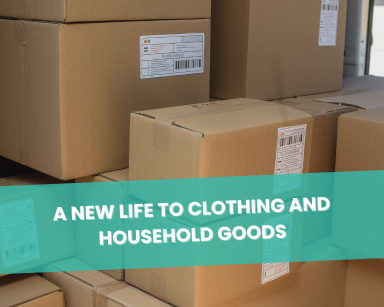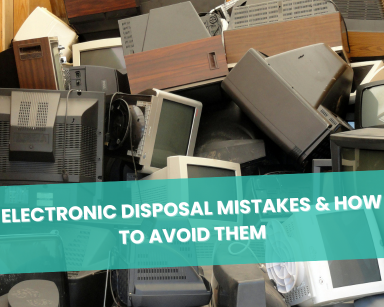How Beneficial Reuse is Transforming Waste into Valuable Resources
Growing environmental issues have corporations, governments, and people looking for solutions to cut waste and advance sustainability. “Beneficial reuse” is among the most successful tactics available. This idea seeks to use materials that might otherwise wind up in landfills. Beneficial reuse of existing materials helps reduce waste, preserve resources, and generate financial possibilities by discovering fresh uses for them. This page investigates what beneficial reuse is, its advantages, actual case studies, and how companies may adopt this approach.
What is Beneficial Reuse?
Beneficial reuse is the process of discovering fresh uses for items that have already fulfilled their first one. Unlike recycling, in which items are broken down and rebuilt into new goods, beneficial reuse seeks to repurpose resources with little change. This procedure prolongs the circulation of precious resources, therefore lowering the demand for fresh raw materials.
For instance, bricks and concrete from building sites might be reworked to create fresh constructions. In manufacturing, similarly, unneeded food waste may be turned into compost or animal food. These methods maximize waste reduction, lengthen material life cycles, and decrease environmental effects.
Environmental and Economic Benefits
Beneficial reuse’s environmental impact is among its most important benefits. Reusing resources helps companies lower the amount of waste sent to landfills, therefore helping to solve the expanding issue of overflowing landfills. By lowering the need to extract, treat, and move raw materials, this method also helps to preserve natural resources.
Additionally, reuse has financial advantages. Companies may reduce disposal expenses and perhaps create new income sources by discovering different applications for waste items. A manufacturing factory may, for instance, sell excess goods to another company, therefore transforming waste into a valuable resource. Moreover, reuse helps businesses reduce their carbon footprint as, usually, the energy required for repurposing materials is less than that of new production.


Real-Life Examples of Beneficial Reuse
There are numerous cases demonstrating how cleverly reusing resources can be applied in different sectors. Allow us to review a few noteworthy cases:
- Construction Industry: Leftover concrete, bricks, and metalwork are often recycled for fresh building projects. This lessens the environmental effect of extracting and processing fresh resources in addition to their extra cost.
- Food Manufacturing: Food producers have many byproducts.Businesses may recycle them as animal feed or compost instead of throwing them away, therefore benefiting agriculture and the environment.
- Happen Ventures: At Happen Ventures, our main goal is to transform waste into assets. One of our initiatives entailed rerouting food waste—including noodles and dough—from a large company into animal feed and community assistance organizations. In this case, we have greatly lessened landfill waste by reusing over 4 tons of everyday waste.
These examples show how well beneficial reuse may produce both economic and environmental results.
Steps to Implement Beneficial Reuse
Approaching reuse within a company calls for both great preparation and thought. The following is how one gets started:
- Identify Waste Streams: Doing a waste audit to find what items are being thrown away comes first. Search for items like packaging, building supplies, industrial waste, etc. that may be used with little modification.
- Create Partnerships: Beneficial reuse involves collaborating with a wide range of businesses that can utilize repurposed resources. For example, construction companies may partner with landscaping firms for materials like rocks or dirt. Beyond that, retailers, brands, and manufacturers can find value in materials that would otherwise be discarded, fostering a sustainable ecosystem across industries. This expansive approach enables companies to turn potential waste into valuable assets for a variety of sectors.
- Explore Regulatory Requirements: Check local and national legislation to guarantee compliance with waste management rules before reusing waste. Before they may be utilized again, some materials may require particular treatment or care.
- Promote a Culture of Reuse: Encouragement of reuse among staff members and stakeholders will assist to foster a sustainable culture. Reuse’s financial and environmental advantages should be shared by companies to inspire broad acceptance.
Challenges in Beneficial Reuse
Although beneficial reuse has several benefits, companies might find difficulties applying this approach. Typical challenges may include:
- Infrastructure Limitations: Certain companies might not have the tools or capacity required to keep or rework supplies. Small factories, for instance, might not have the capacity to keep goods before they might be recycled.
- Costs of Implementation:Although businesses might face significant initial expenses if they attempt beneficial reuse on their own, partnering with us eliminates these challenges. We take care of the entire process, enabling businesses to achieve long-term savings without the need for internal reorganization or new alliances.
- Lack of Awareness: Many companies are just not aware of the chances for good reuse. Help more businesses embrace these ideas by means of outreach and education.
Overcoming these obstacles calls both for dedication to sustainability and imaginative problem-solving. Businesses may create possibilities by making investments in the required infrastructure and encouraging reuse of their products.
How Happen Ventures is Leading the Way in Beneficial Reuse
Happen Ventures: Setting the Standard in Beneficial Reuse
Our mission at Happen Ventures is to help businesses across various industries embrace beneficial reuse practices. Working with our clients allows us to assist them in finding waste streams that may be used for other purposes, therefore turning excess into valuable assets. We think every item has worth, whether that means discovering fresh uses for industrial leftovers or guiding food waste to help nearby communities.
Along with helping our clients save money, increasing their sustainability initiatives, and raising their ESG (Environmental, Social, Governance) ratings, our strategy lowers waste. Happen Ventures is pleased to lead the way in successful reuse projects by providing sensible and reasonably priced solutions.
Future of Beneficial Reuse
Constantly evolving technology helps companies find creative uses for excess materials. Advances in material science now enable the recycling of previously non-recyclable products. Likewise, digital platforms connect companies with those in need of extra supplies, promoting efficient resource use.
Government incentives and rules supporting reuse should also be expected to grow. Companies who embrace reuse techniques will be more suited to follow new rules and take advantage of possible incentives as nations and governments implement more strict environmental standards.
Conclusion
One very effective weapon in the battle against resource depletion and waste is beneficial reuse. By reusing products, businesses can reduce costs, lessen their environmental impact, and contribute to a more sustainable future. For example, food producers are finding new uses for waste, while construction companies are recycling building materials. Beneficial reuse offers many opportunities for organizations to make a positive difference.
Our goal at Happen Ventures is to enable companies to embrace beneficial reuse—that is, to transform waste into useful resources that advance the economy and the ecology.










